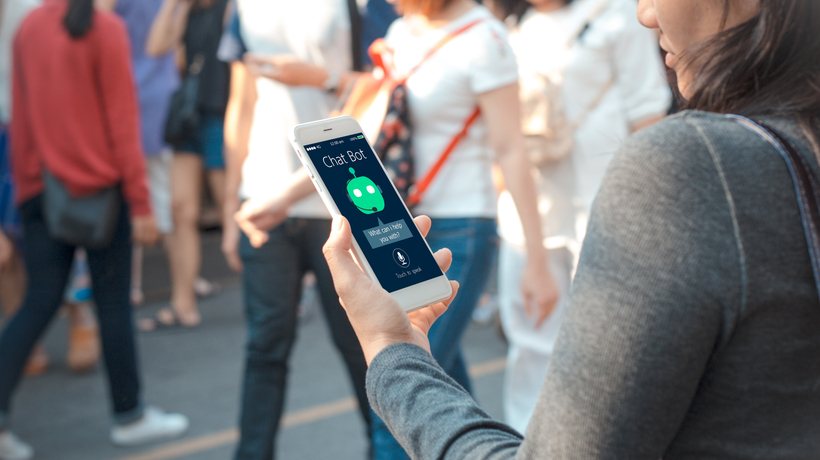Transforming L&D With A Chatbot
Chatbots as instructors and mentors in the workplace can make a real impact, but first, you need to make L&D ready for the bots. Here are some secrets to making chatbots in L&D a real success.

1. Make Training Memorable
It’s been estimated that up to 50% of what you learn in a training session is left there as you walk out of the classroom or switch off your computer. This gap in memory can be filled or even avoided altogether by deploying a chatbot in the workflow.
Having a bot in the workflow allows employees to have the information and training they need to do their job when and where they need it, rather than having them step away from the desk into a classroom or taking them to another screen to participate in an online course.
A chatbot can reinforce by learning while doing. Employers learn better on the job rather than before the job.
2. Change L&D To Meet New Expectations
We now have access to vast sources of information instantaneously, round the clock. For anyone with a mobile, smart device the answer is just a couple of taps away. Ease of access and constant connectivity are changing learner behavior and expectations.
Modern employees expect that these new ways of accessing information are available to them at work as well. You’re not going to wait for L&D to run a training class or eLearning module when you have Google, YouTube, Pinterest, and countless wiki sites at your fingertips.
But AI-powered chatbots allow L&D to move beyond Google. A straightforward search will bring you information, but often too much. A chatbot programmed and controlled by L&D can match the ease of access and connectivity to information and resources, but critically can ensure that it’s the right information, targeted and personalized for the person looking for it. The data is placed in context, right for your organization’s employee. So instead of endless ways of doing, you access the right one for the right time and place.
3. Use Bots As Trainers
A US professor concerned that his TAs were being deluged by questions from students in his large undergrad class brought in a bot, based on IBM’s Watson platform to act as a Teaching Assistant. The bot was fed sample questions and they programmed her with the answers. It became so efficient by continually learning from the student queries that it was answering questions from students with a certainty of 97% and far more quickly than her human colleagues.
AI chatbots can play a similar role for L&D in organizations. Imagine having a resource that employees could access whenever they had a question. You wouldn’t need to schedule training, just have L&D make sure the chatbot was trained. We’ve all heard of 'train the trainer'. It’s now time to start training the bot.
4. Make The LMS Invisible
Many organizations use a Learning Management System (LMS) to deliver training and make resources more accessible. The management and system elements often work well, but the learning that’s there isn’t delivered when learners really need it, or in the form they need it.
Chatbots can make learning more relevant and accessible by moving the LMS out of the way. Learners gain direct access and control to the information and learning stored in the LMS via the bot without having to deal with complex interfaces or sign up for a course. Employees have information when they need it—on the job. This makes for more personalized and effective learning.
5. Design For The Chatbot
Bots are smart, adaptive, and responsive, but they’re only as good as the information they can access. If you want to use chatbots efficiently as part of your L&D, you need to make sure that the learning content and resources are designed for chatbots to use. This means creating resources that allow quick access and intelligent searching and retrieval of information.
Learning support needs to be packaged so it can be digested quickly. An employee looking for a piece of learning while on the job has limited time and bandwidth. A sales rep or maintenance engineer wants to have the information he or she needs on their phone or tablet at the client’s location, not sit through an entire refresher course.
6. Develop New Skills For L&D
It’s a popular misconception that Artificial Intelligence is necessarily going to remove jobs. Chatbots won’t replace the need for L&D, but they will require it to adapt. New skills such as scripting, data analysis, and content creation will be required to train and maintain the bots. Instructional Designers will need to ensure that they’re designing training to be delivered by a bot.
As chatbots move learning into the workflow, trainers, Instructional Designers, and learning consultants will need to follow them and work alongside process owners and systems experts as part of cross-functional teams configured to deliver learning in the workplace.
7. Concentrate On The Learner
Access to information and learning content via a chatbot leaves employees in control of their learning. Training becomes more effective because learners invest in it and identify and take ownership of their own training needs.
The focus is L&D on learner-centered design, rather than the traditional top-down flow of information in the instructor-led model. L&D needs not so much to control as to facilitate learning. Learners are L&D’s prime customers and it needs to support them by helping them learn how to learn.
8. Embed Training In The Workflow
Allowing employees to have access to a chatbot that itself has access to your organization’s learning assets and content means that training can move into the workflow. The employees can use the chatbot as a personal tutor and learning ‘buddy’. This approach offers the prospect of continuous learning and personalized support.
Chatbots can deliver the right information as and when it’s needed. For employees who are away from their desks—in off-site meetings, on the factory floor, fixing appliances in customers’ homes—this means they’ll have the information they need to perform the task or answer the query accessible on smart, mobile devices.
L&D chatbots deliver instant access to expert knowledge and advice all the time. And the learning is more likely to stick as it’s been applied in a real-world context so the cycle of learning and forgetting is broken.
9. Learn From The Bot
The chatbot isn’t just delivering learning, it’s also providing information about how people learn and what they need to learn. It records data from its interactions. This data can be then analyzed to see what is being learned and when. It will also tell you what information is missing by recording the queries that it couldn’t respond to.
Evaluation is often the neglected element in learning design, but with a chatbot feeding back data on what works and what doesn’t it becomes a critical stage of the design process. This means training can become more relevant and effective as it’s based on the demonstrable needs of employees rather the notional needs determined by L&D.
As learners learn, learning designers learn from the learner and learning becomes a continuous process rather than an episodic event.
10. Work With The Bot
It’s not so much about the chatbot performing the L&Ds function, it’s about L&D working alongside the bot. By employing a chatbot you transform learning from being a remote, singular event to being an integral part of the working experience.
Traditionally training has occupied employees’ time and taken them away from their work—at a cost to productivity. With chatbots, training is more effective, relevant, and accessible to learners when they need to apply that learning.
The bot identifies gaps in learning and records the effect on performance. It highlights the real need for training and quantifies the impact it can make. So instead of seeing L&D as a necessary burden, employees understand what a real difference and impact it makes.
Training is often regarded as costly and inefficient: its real value hard to measure and underappreciated. By introducing a chatbot into your organization you can take L&D out of the shadows and place it center stage. The chatbot delivers a quantifiable return and real impact from your investment in L&D.
Sources:
- The AI-Driven Digital Transformation Of Learning And Development
- Five Steps: Changing Paradigms from Training to Performance
- Take your Team from Training to Performance Support
- Learning Trends In 2016 – Learning Paradigm Shift
- New Learning Paradigms
- Paradigm Shift in E-Learning









